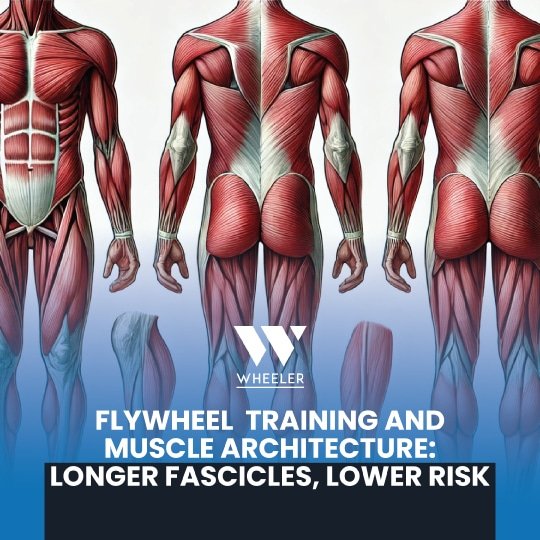Flywheel Training for Sports Performance: Wheeler Jump, Gym, and Tech for Strength and Safety
Coaches, if you’re aiming to elevate your athletes’ results, integrating flywheel training can make a difference. The Wheeler Sports Tech solutions, including the Wheeler Jump and Wheeler Gym, offer dynamic resistance for eccentric strength and muscle architecture improvement. This method helps lengthen hamstring fascicles, which is key for injury prevention and performance enhancement.
What is Fascicle Length, and Why Does It Matter?
Fascicle length refers to the distance between the endpoints of a muscle fiber. Longer fascicles offer several benefits:
- Greater eccentric contraction capacity, essential for deceleration, direction changes, and sprints.
- Reduced injury risk, especially for hamstrings, which are prone to injury during the eccentric phase of sprinting.
- Enhanced athletic performance, as longer fascicles can generate more force across a greater range of motion.
Studies have shown that athletes with shorter biceps femoris fascicles are up to 4 times more likely to suffer injuries. For this reason, increasing fascicle length is a key goal in training programs, and flywheel training has proven to be particularly effective in achieving this.
How Does Flywheel Training Affect Fascicle Length?
Flywheel training uses eccentric overload to stimulate specific adaptations in muscle architecture. During the eccentric phase:
- The muscle lengthens under tension, promoting fascicle growth.
- This stimulus not only enhances muscle endurance but also optimizes the ability to generate force at critical muscle lengths, where most injuries occur.
In a 6-week study with athletes, flywheel training increased biceps femoris fascicle length by 14%, while conventional training showed no significant changes.
Advantages of Flywheel Training Over Traditional Methods
While traditional exercises like the Nordic Hamstring Curl (NHC) also promote positive adaptations in fascicle length, flywheel training offers additional advantages:
- Adjustable resistance: Allows the load to be tailored to the athlete’s level, maximizing eccentric stimulus.
- Constant load: Unlike weights, flywheel training provides continuous resistance throughout the full range of motion, enhancing muscle activation.
- Versatility of exercises: From leg curls to hip thrusts, flywheel devices enable work on various functional movement patterns.
Training Outcomes on Fascicle Length: What Science Says
Here are some key findings from recent studies:
- Duration of training: Six to eight weeks of flywheel training has shown significant improvements in fascicle length.
- Performance impact: Longer fascicles are associated with better sprint times and greater eccentric strength, both critical for high-speed sports.
- Injury prevention: Increased fascicle length reduces fiber stress during sprints, lowering the risk of tears.
One study involving soccer players found that those who incorporated flywheel training experienced a significant reduction in muscle injury rates compared to those using conventional methods.
Key Flywheel Exercises to Target Fascicle Length
To enhance hamstring muscle architecture, consider incorporating the following exercises:
- Flywheel Leg Curl
- Focus: Eccentric strengthening of the biceps femoris and semitendinosus.
- Execution: Emphasize controlled eccentric phases for maximum adaptation.
- Flywheel Hip Thrust
- Focus: Improves hip stability and explosive strength.
- Execution: Perform slow, controlled eccentric movements to optimize muscle engagement.
- Flywheel Hip Extension
- Focus: Increases fascicle length while enhancing functional strength.
- Execution: Gradually adjust inertia to match the athlete’s progression.
How to Integrate Flywheel Training Into Your Routine
- Define clear objectives
Determine whether the focus is on injury prevention, rehabilitation, or performance enhancement. - Gradual progression
- Weeks 1-2: Focus on familiarizing athletes with the technique and eccentric demands.
- Weeks 3-6: Progressively increase the load while ensuring proper execution.
- Frequency
Include flywheel sessions 2-3 times per week to maximize benefits without causing excessive fatigue. - Technique monitoring
Movement quality is essential. Supervise posture and ensure athletes fully control the eccentric phase.
Conclusion
By leveraging Wheeler Sports products, athletes can not only reduce injury risks but also improve force development rates. Ready to make the shift? Explore Wheeler Gym and other cutting-edge solutions today!
Are you already using flywheel training in your programs? Let us know how it’s working for you! And remember, a science-based approach will always be your best ally.
Author


